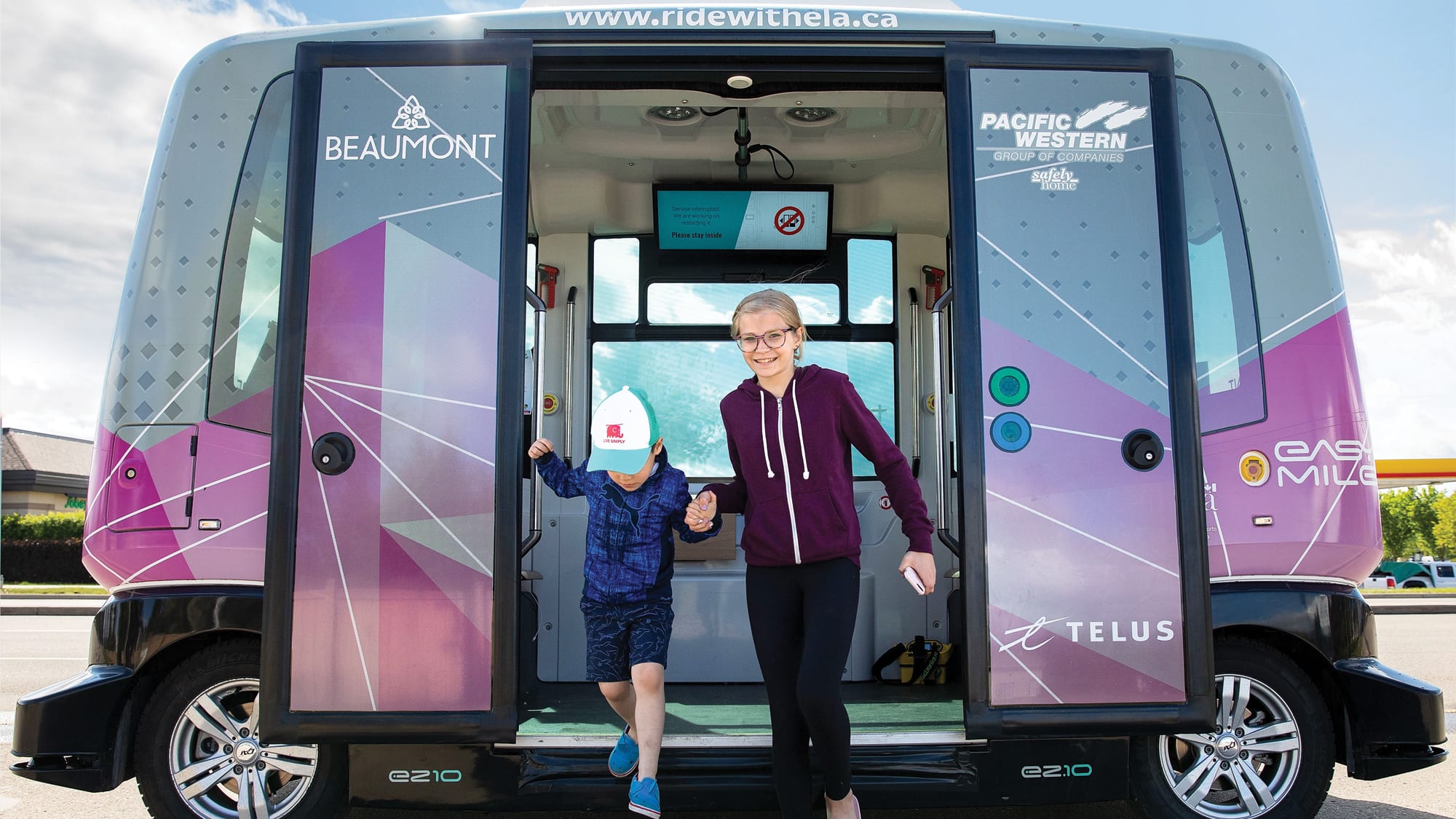Not that long ago, self-driving cars could only be found in pages of sci-fi novels. But automated vehicles (AVs) are no longer futurist fodder. Electric Autonomous (ELA) shuttles have already been tested in Edmonton and Beaumont, and at the Wilder Institute/Calgary Zoo. Experts predict we’re just 20 years away from fully autonomous vehicles ruling Canada’s public roads.
Most automakers already offer many automated features, including adaptive cruise control, lane-centering steering and enhanced communication and navigation systems.
Navigating countless studies and research about these features, however, can be a daunting task. That’s why AMA and CAA have a dedicated AV portal. You can learn about the AVs of today and tomorrow. You’ll find information about automated technology and what’s coming next, as well as benefits and possible pitfalls.
MORE TO READ
The lowdown on Advanced Driver Assistance Systems
Driverless cars surely won’t be perfect, but they are expected to be better at following the rules of the road than their human counterparts. Research shows driver error is a leading factor in vehicle collisions. The Conference Board of Canada predicts AVs will prevent 90 percent of traffic collisions. Transport Canada also recognizes driverless cars’ potential to enhance safety. “In 2016, 1,898 people lost their lives in motor vehicle collisions in Canada,” says Minister of Transport Marc Garneau. In a statement outlining AV testing guidelines, he added: “It is our goal that automated vehicles, in time and in concert with other policy measures, will help us drastically reduce this number.”
Mobility is another key benefit of automation. “Self-driving cars will transform how we look at mobility, and this will go beyond what our daily commute looks like. AVs create new mobility options for people who may not be able to drive, such as those with certain disabilities,” says Jeff Kasbrick, AMA’s vice-president of government and stakeholder relations. “Nearly three quarters of Canadians agree that AVs will improve accessibility for all.”
Productivity is expected to increase as well. According to a report commissioned by CAA, every year Canadians spend more than 11.5 million hours stuck in traffic. Even a small reduction in daily commuting provides more time for work, family or leisure pursuits.
MORE TO READ
How dashboards can contribute to distracted driving
While this new tech increases safety and mobility, it does not replace human skills behind the wheel. Today’s AV sensors position your car in relation to road markings and other vehicles. When those things are harder to see—in snowy conditions, for example—the sensors become unreliable. Driving still requires your full attention, including shoulder checks for blind spots, use of mirrors and careful lane changes.
Automated features also collect reams of data about your movements and contacts—data that’s estimated to be worth $750 billion by 2030. “AMA believes that drivers should be aware of what is being collected and they decide who gets that data,” Kasbrick says.
The AV world is changing fast. To stay up to date on the latest developments, check caa.ca/avs.
AV KNOW-HOW
Levels of automation and when we can expect them
LEVELS 0-1: 2005-2015
Driver controls the vehicle, but tech is there to help. Features include: cruise control, lane departure and forward collision warnings, blind-spot detection, emergency braking, lane-centering assist.
LEVEL 2: 2015-2020
Support driver with steering, acceleration/deceleration under specific conditions. Features include: automated lanekeeping and adaptive cruise control.
LEVELS 3-4: 2020-2040
Car can drive itself in some situations, but still relies on people to be attentive at the wheel. Offers driver controls, if human takeover required.
LEVEL 5: 2040-2050
Fully automated and may not even have driver controls. Vehicles can drive in any conditions without human intervention.
